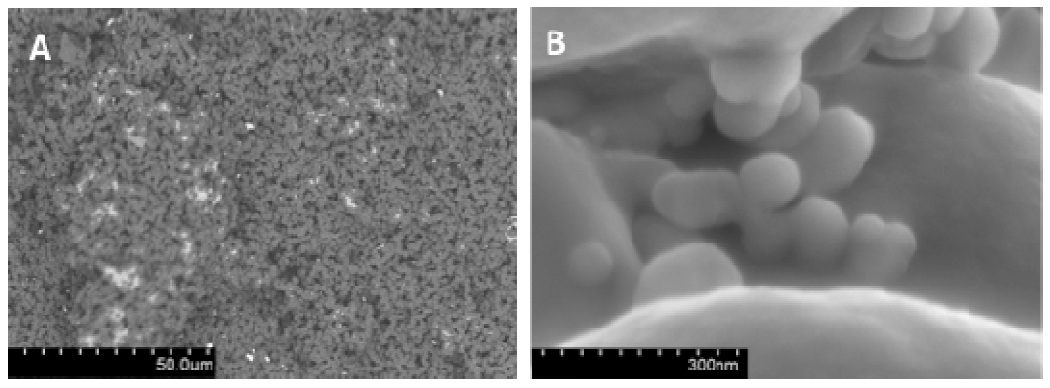![]() Nanotechnologies for Trace Explosives Detection
Nanotechnologies for Trace Explosives Detection
PI: Prof. Don DeVoe
The development of novel nanotechnologyenabled materials for label-free and real-time trace explosive detection is under investigation. Specifically, we are developing functionalized nanoporous materials as novel surfaces for ultrasensitive analysis of adsorbed explosives by surfaceenhanced Raman spectroscopy (SERS). Label-free detection is critical for robust, inexpensive and field deployable explosive sensors. To this end, SERS has emerged as a highly promising analytical technique. Raman-scattered photons from molecules adsorbed onto a metal surface provide a unique spectral fingerprint that can be used for molecular sensing and identification. The ability to measure trace levels of analyte molecules is due to the well-known Raman signal enhancement resulting from large electromagnetic fields at the interfaces between metal nanoparticles. Although the Raman effect itself is inherently weak, SERS involves the use of metal nanoparticles as an excitation substrate, and has been shown to provide up to 14 orders of magnitude enhancement to the Raman signal, ultimately enabling single molecule detection under appropriately controlled conditions. In addition to providing exquisite detection sensitivity, the identification of various chemicals and biomolecules has been demonstrated using SERS by interrogating the spectral signatures produced. Thus SERS is an exceptionally promising spectroscopic method for emerging platforms for trace explosives detection.
In this work, we have demonstrated the use of nanostructured porous surfaces with high specific surface areas for enhancing analyte adsorption and increasing SERS signals through optical interactions with the structured substrates. Techniques for covalently attaching metal nanoparticles to the porous materials have been developed as a robust alternative to simple physical adsorption used in many existing SERS systems. Three specific material systems are being explored in this effort, namely polymer monoliths, nanofilament silicon dioxide, and porous anodic alumina. These surfaces provide access to a range of bulk and surface chemistries as well as pore morphologies for the SERS surfaces. Common features shared by each of these surfaces include amenability to low-cost fabrication, high optical transmission over the wavelength range of interest for SERS detection, and readily tunable surface properties.
Our results reveal that porous anodic alumina membranes with adsorbed gold nanoclusters provide the highest sensitivity, with a demonstrated detection limit in the low pg/mL range for nitrotoluene explosives. This is one of the first demonstrations of label-free SERS detection of explosive materials. Unlike our previous work, using nanofilament silicon surfaces for explosive detection and laser desorption/ionization, the nanoporous alumina SERS technology offers real-time detection with simple optical instrumentation suitable for integration into a compact and field-deployable system. For the coming year, we will focus on improving the detection limit through better control of nanoparticle clustering within both polymer monolith and alumina nanopores. In addition, the use of metal nanoparticles functionalized with capture probes within the porous surfaces will be evaluated as a straightforward approach to providing improved selectivity for specific classes of analytes.In this way the resulting surfaces will provide multi-level analyte identification by combining SERS signature evaluation with filtering of selected molecular classes, for example using cysteine as a capture probe for nitrotoluene explosives.

(a) SEM micrograph showing chemically immobilized polymethacrylate polymer monolith and embedded metal nanoclusters; (b) SEM micrograph revealing a metal nanocluster attached to the monolith matrix.

